Enjoy my most recent posts
The articles are being categorize into various sections and you can find them in the individual sections such as Shrimp, breeding, tips and others. On mobile devices all articles will be shown. If you want to find older articles please refer to Archive Should you not be able find an article you wish to read about or learn more on, please feel free to contact me using the Contact page.

Sorry did i write the wrong title for this post? Isn’t it supposed to be Shrimp related, why is this talking about the Michelin Star?
This analogy was shared to me after a discussion with a breeder in Singapore such as what are mass market shrimp food made up of, what goes into that mix and such, how are shrimp bred and sold, i decided to pen down our thoughts on this.
This short post is for light reading.
A person walks into a Michelin star restaurant after trying to book in advance for a year, he was ushered into the restaurant with finest. The dinner started and he was very please he tasted excellent Wagyu (Japanese beef) and then decided to ask the Chef.
“What make this steak so tasty?”, the Chef just smile and commented about the special breed of cow that underwent a specific feeding/caring routine but more importantly they are also a selected line of livestock that have been deem the highest sought after grade.
The person then follow up with a few other question “where did this Wagyu come from, how did you manage to cook this, what are your secret?”
The Chef replied politely that this came from a prefecture in Japan and we use the finest of ingredients to serve you well. The chef continue entertaining the guest as dinner was cooked and serve in front of them. Everyone commented that it was one of the best dinner they ever had.



Why did i relate this story?
Globally we have many breeders just like we have many restaurant but each of these breeders have their own trade secrets that they will only share to a certain extend – just like the Chef. Even if the chef shares everything with you and you open up a restaurant doesn’t mean you will be awarded the Michelin star but you do probably get to learn over many years how to breed good shrimp.
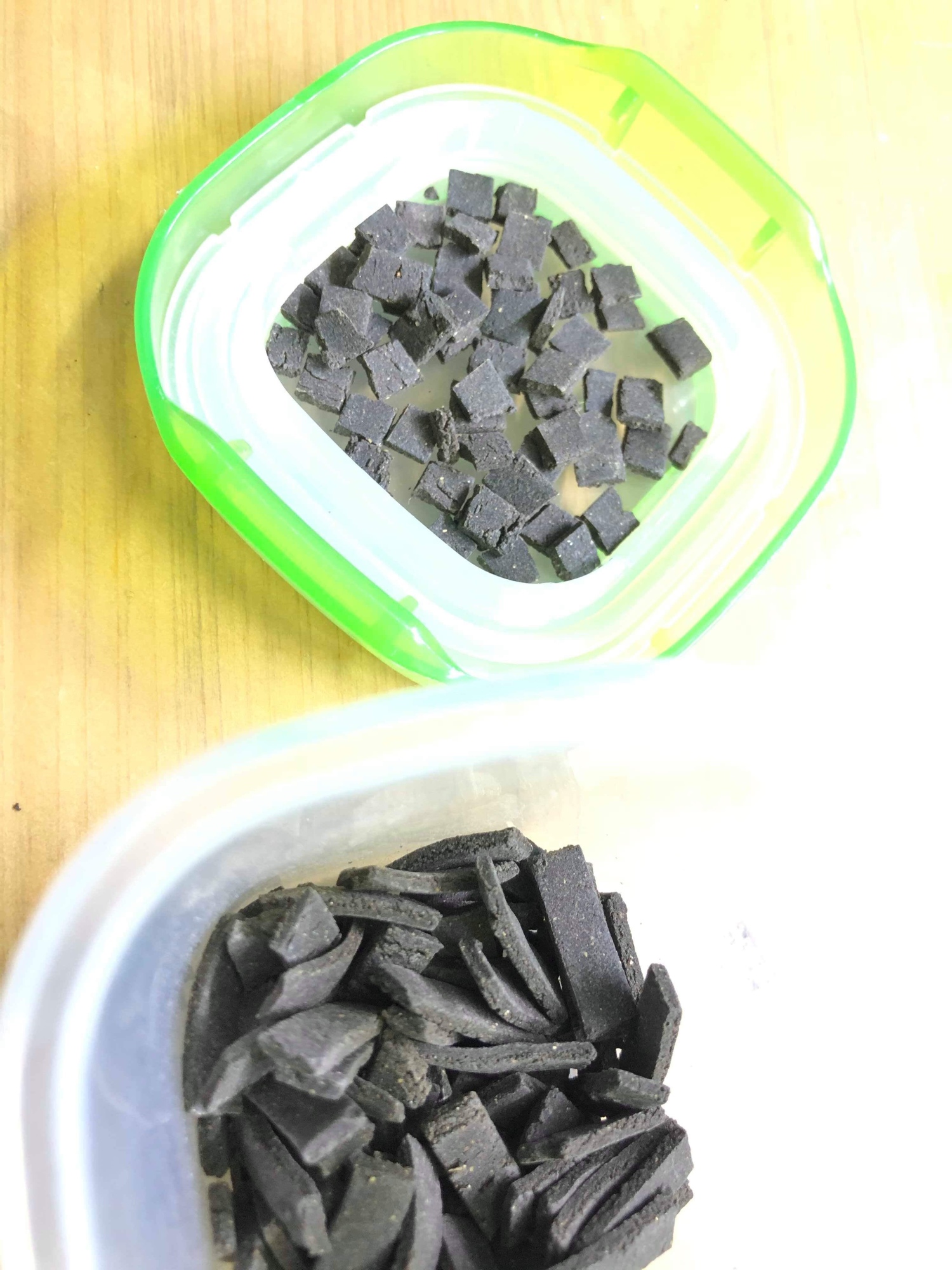
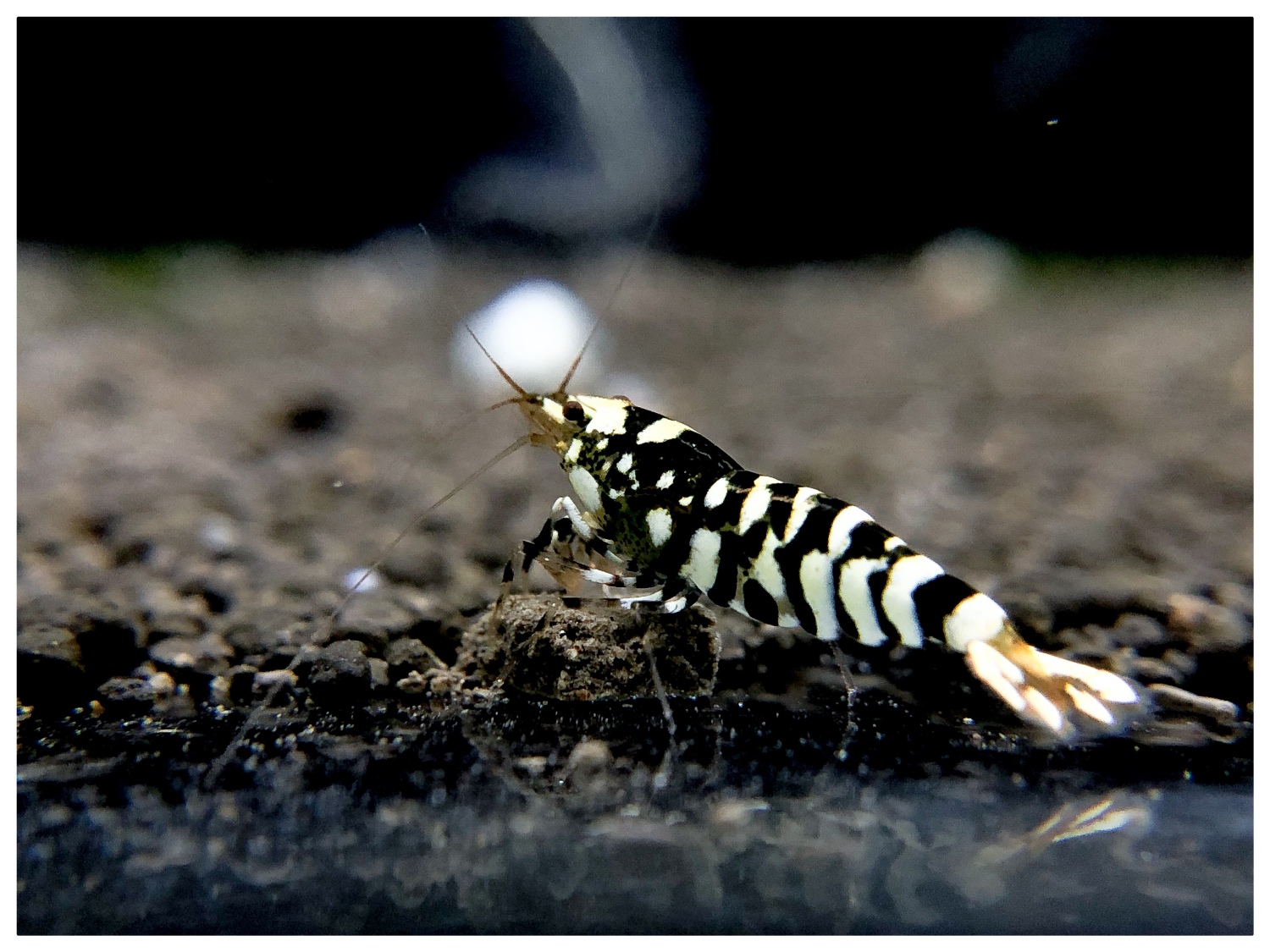
It is however important that as a breeder the most critical part of the processes adds up starting with keeping the water parameters suitable. having good stock shrimp and then the selection process – do you have sufficient tanks to do so; are you keeping a log about it; are you following a strict culling process; every little bit counts.
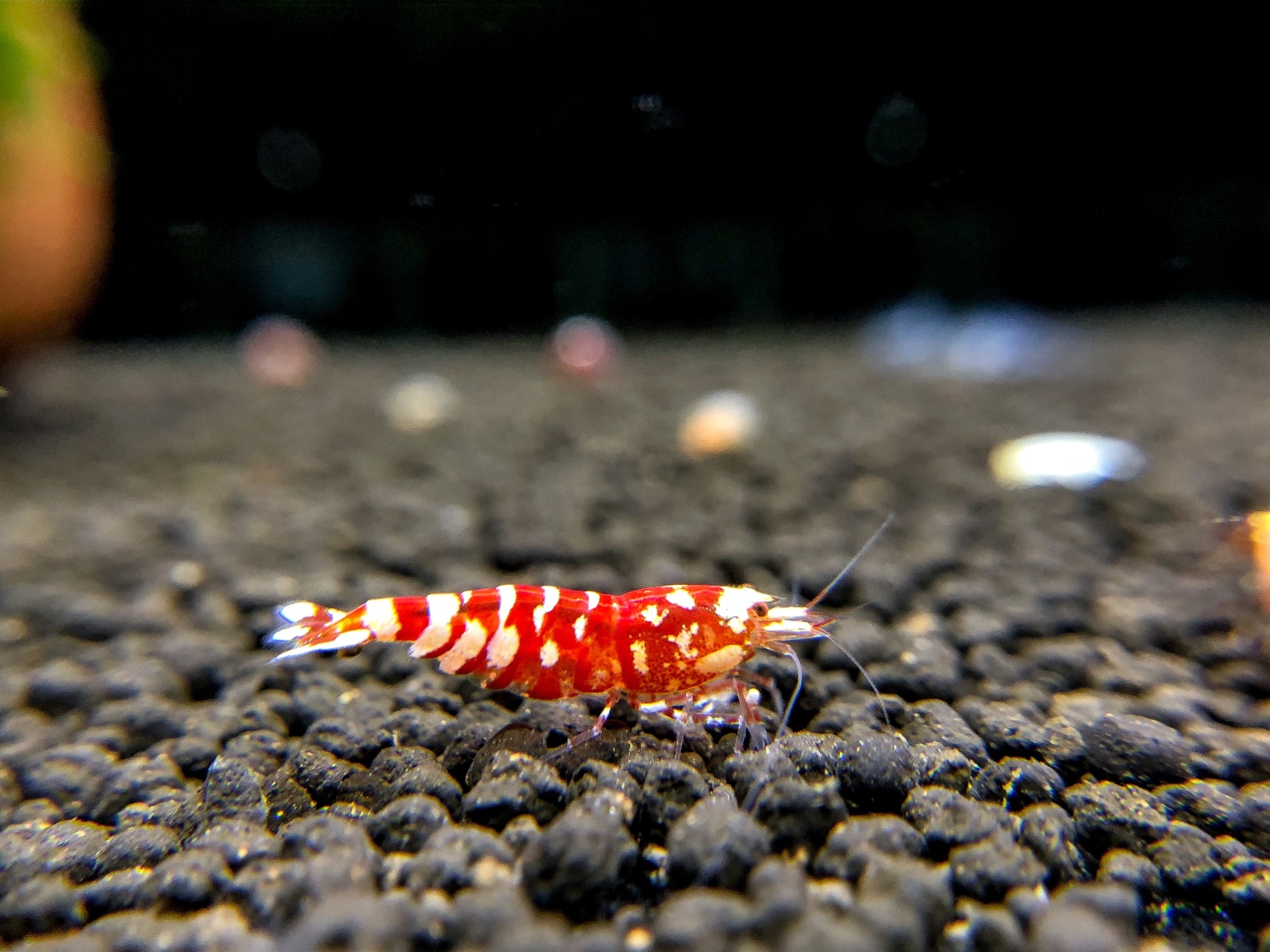
Consistency.
Behind every successful breeder story appears one commonality and that is consistency. If you want to be successful in your breeding journey, and equipped with the knowledge of shrimp breeding you need to have consistency in your process and source. The journey to breeding good shrimps, such as culling (which i will touch on in another long post) is difficult for many hobbyist but that doesn’t mean the shrimp has to go, it all means it will be kept in another tank. The stricter you cull the better. If you apply consistency across your husbandry, breeding methods and source, you will be on the road to success.
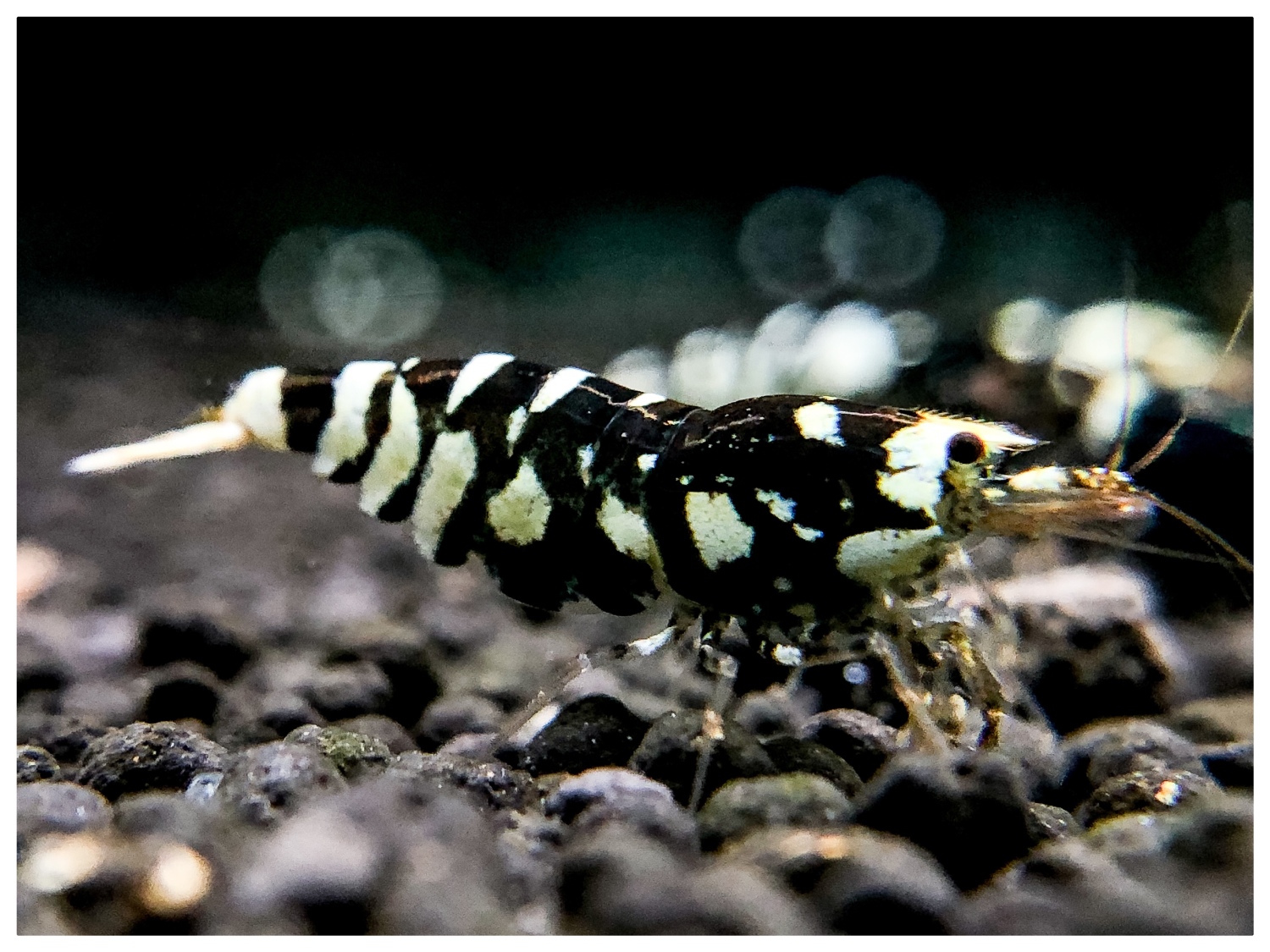
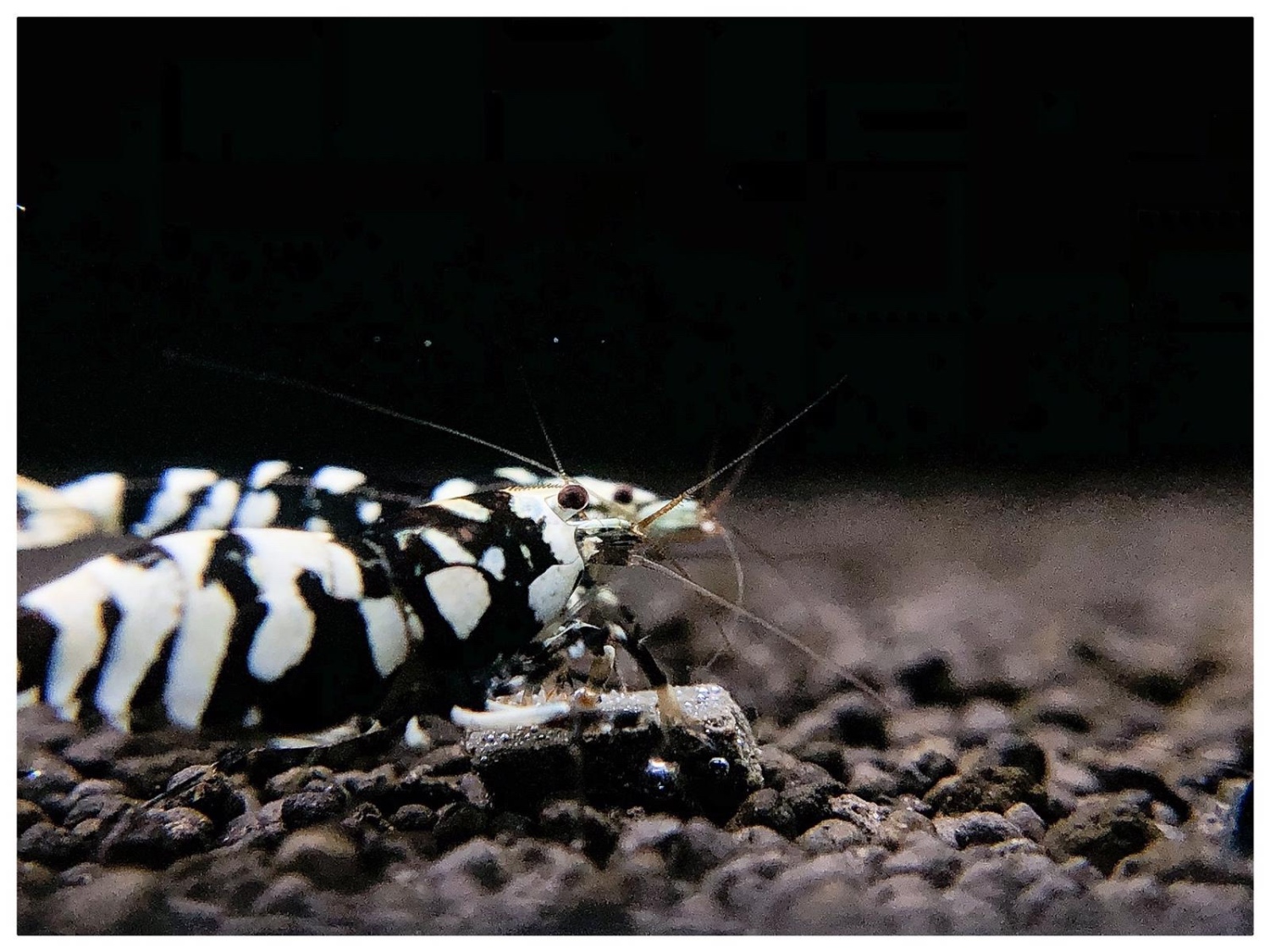
While we chase for the stars, look among hobbyist who have high grade shrimp and then if willing – share the information with you. This shouldn’t be taken for granted, and in all my information sharing – there are already processes that will certainly help you to be a better breeder and when you earn your stars, remember to invite me for dinner some day.
There are a lot of factors influencing the shrimp ability to breed from water parameter to food to shrimp genetics. However, today i would like to touch on a fairly common topic on Shrimp Food. The first question i get asked frequently is how often should i feed my shrimps? If you have a lot of shrimps like 20 or more, you might want to consider a daily staple feed fed twice daily and also a grazing material. Grazing material such as Lubao, Indian Almond leaves, Alder cone, cholla are some good examples.
The reason to feed them twice is so all your shrimps are fed and the female will ‘Think” that the tank have sufficient food to support their next generation. The whole idea is to feed lesser quantity but high frequency. So twice is good and if you can do 3 times it works as well.
If you feed in the morning and the shrimps are unable to finish it within 4 hours, then you’re not required to feed the second time in the evening Thats my general rule of thumb, Remove the food by then or if you have ramshorn snail, they will help with scavenging and foraging on the shrimp food. If the shrimps are not feeding, it could be there are still plenty of biofilm in the tank but do watch out if the shrimps are looking lethargic and not feeding.
A grazing material aids in building up biofilm for shrimps to consume between meals. Think of it like a snack and a good grazing material will be the food source between feeds.
There is a wide range of food in the market and i think we are spoiled for choice and which one is good for my shrimps? Personally i like using a good staple food and that is Hwa V1.
Staple Food
- Basically shrimps are not that fussy eater, most of the staple food sold in aquarium shops today are basically ok to feed your shrimp. I personally prefer keeping things simple and to feed only 1 type of staple food but a variety of grazing material is very crucial.
- I’m using Hwa Version 1 Shrimp food pad, this food is formulated with carefully selected ingredients to provide shrimp with all their requirements.
- if you are using some shrimp food which you think they’re good for your shrimp, good! There is really no need to change.
- Occasionally i feed Bacter AE and blanched spinach, they’re fairly good especially blanched spinach. if i’m feeling rich, i’ll order a pack of organic spinach and take out one serving for the shrimp while i consume the rest as a salad. For Bacter AE, i only dose them very minutely once a month to provide additional boost for creating biofilm.
Grazing material
Now here we get serious, grazing material in my opinion is equally important to daily feed. The amount of surface area for creating biofilm is important as it mimics the natural environment where Shrimps feed on biofilm.
Lubao, Indian Almond leaves and moss are three very popular and recommended grazing material. Alder cone and Cholla are not native to at least this part of the world, so i defer that information to those who have them. For Indian Almond leaves and Lubao we have very easy access to them hence we use them readily. I really like using Lubao because it is technically a microoganism food that produces food for cultivating microorganism for the shrimp to feed on and also biofilm. Indian almond leaves without going too deep into this topic has antibacteria properties, produces biofilm and are well liked by most shrimp. Grazing material is important because shrimp feed constantly and if there are not enough biofilm in the tank and daily feed is not consistent, the shrimps will not breed. They will start cannibalizing during molting. Hence, it is highly critical to have grazing material available.
A living grazing material that works very well is moss. Moss harbour a lot of microorganism which allow adults and shrimplets to graze on. Moss also provide cover for berried shrimp and shrimplets however it is also important not to over crowd the tank with moss because if it get too dense, some of the berried female may get stuck in there and die. Hence, always thin out the moss to a small bunch the size of your hand.
Summary
Taken together, it is vitally important for food to be readily present in the tank but this is also a fine balance between food availability and water parameters. As more food and grazing material is introduced into the tank, the water parameters changes so do choose a good staple food and grazing material into your shrimp breeding setup and it will go a long way. You will be rewarded with more berried shrimps and shrimplets in the months to come. In addition, as lubao is my favourite grazing material as it is easier to manage and control.
It is difficult to ignore the fact that this topic on Shrimp net is often very overlooked and often undermentioned. Reason i say this is because most of the time hobbyist will get any net and use it for ages! I am one of them until i met a craftsman who specialize in shrimp net and have been customizing more than thousands of Shrimp net for hobbyist.
i got very intrigue to learn more about why shrimp net differs so much compare to the normal aquarium net. I was lucky to be introduced to this net craftsman earlier on. He is based in Taiwan where it is the mecca of the shrimp hobby. Learning from him i have understood the importance of how the net should be design the way it is.
- customizable length.
- No 2 hobbyist have identical setup and it is important to have your net customized to your usage so that you can use the net without having to dip your hands into the tank
- get a slightly longer than the height of your tank net. Reason being is the angle when you want to reach the far end of the tank
- Net material
- Low drag or easy to move the net around in water. The holes of the net has to be kept small but not too small because it will be difficult to maneuver the net in the water.
- The small holes prevents shrimp legs/etc from entering into the holes of the net. For example if a rostrum get stuck inside the hole of the net, the barb like structure could be difficult to dislodge.
- Net handle to be light – for ease of use
- Care of the net
- I learn it is important to keep the net dry after use, shaking it dry and hang it to drip dry. For those living in humid conditions like in Singapore at least…your net wouldn’t last very long before the net becomes soft
- when net becomes soft, it is advisable to change. This will prevent your precious shrimp to fold accidentally during the netting of shrimp.
- It is far easier and less stressful for a shrimp when the net material is still stiff allowing the shrimp to enter and exit easily.
- Net too have their expiry date and that is when it becomes soft and limp i will have it change.
That is what i have learnt so far from the craftsman in Taiwan. The YouTube video can be found here: https://bit.ly/3lVWrZZ
Here it is, the net i have been using so far and it really serve it’s purpose. Once the net is replaced by a new net, i will remove the net material and keep the remaining of the net, bend it and make it into a soil leveler. It can be found here: https://www.youtube.com/watch?v=-dSLSnLnuJ0
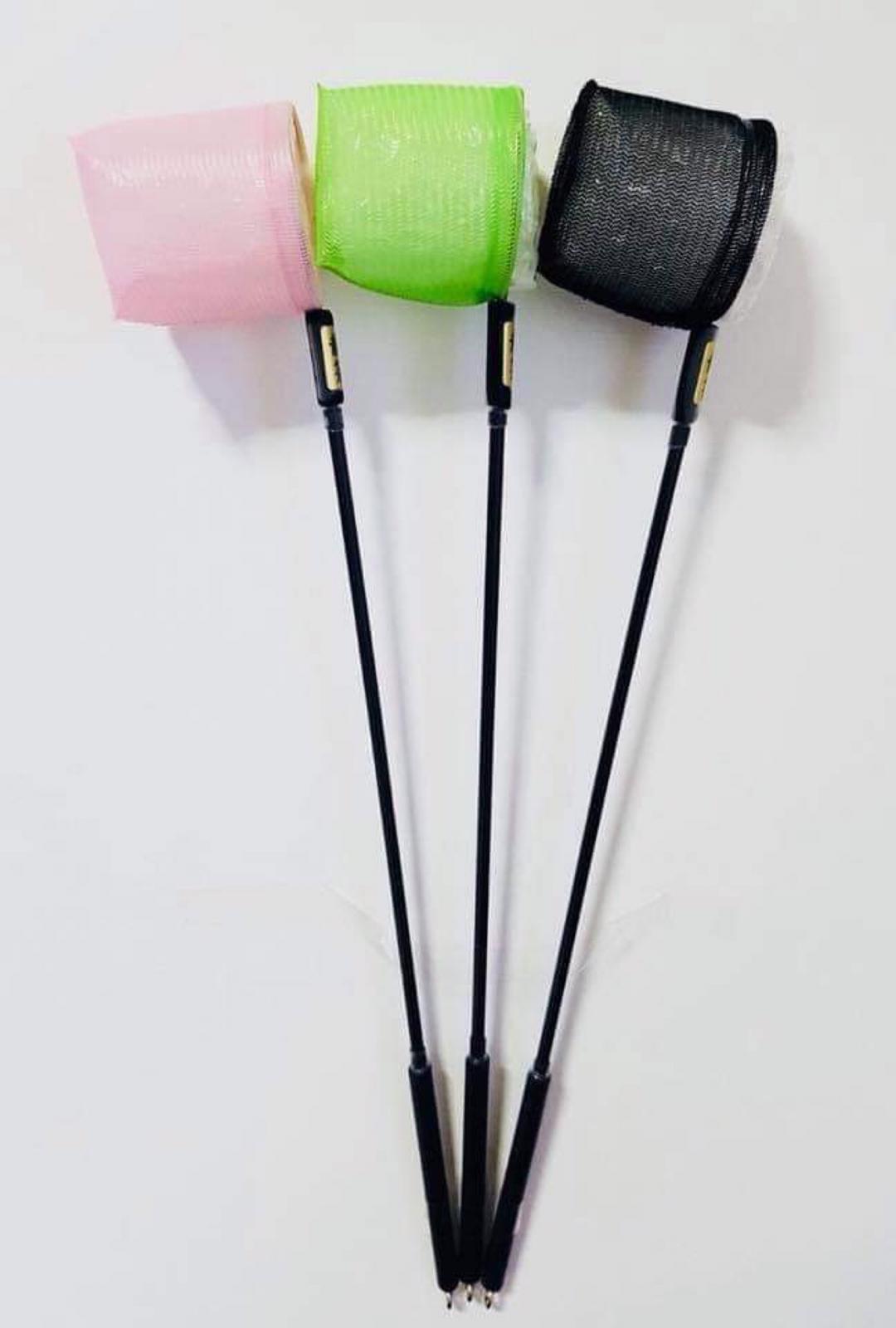
could be coincidence but even Hwa from Taiwan uses this net when i browse through his pictures.
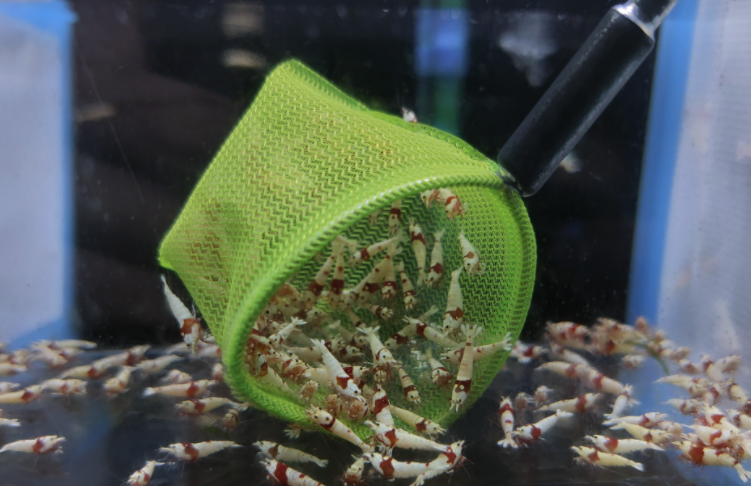
and of cause… the man in action
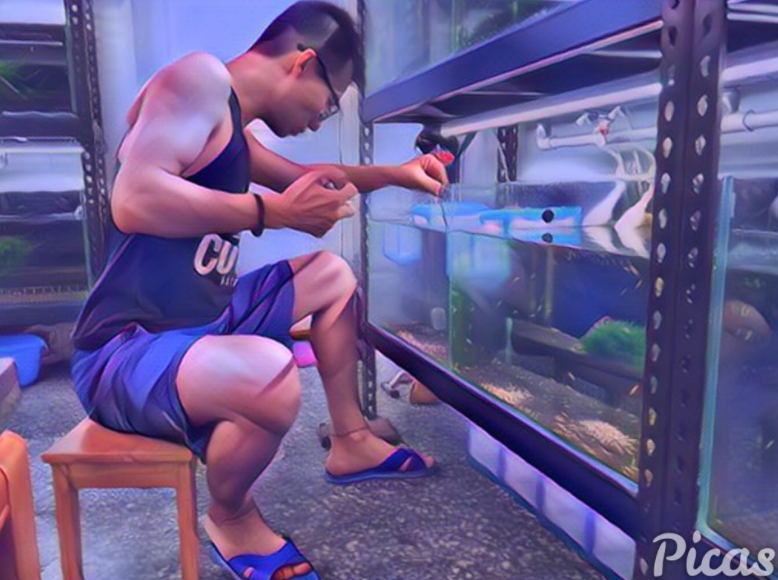
One hand on the number clicker and the other hand netting the shrimps. with a stiff net, it will make the netting process much easier. These Taiwanese breeders net more than 5000 shrimps in a sale order, and simply put this has certainly change my perspective of a simple net. It has weave through all your precious shrimp from tank to tank. Hope you have learn something through this post!
picture taken from https://www.facebook.com/profile.php?id=100002610781257
Had a great support to go ahead with vlogging, not something i thought about doing but certainly a good way to improve myself in many areas. Like one of the comments shared with me “You Only Live Once”.
Not the best but getting the first step out is a great deal for me to continue doing it, i enjoy sharing information like in this wordpress and i would now take it to another platform where i integrate information here.
Feel free to share with me how i can improve my vlogging as i’m still very new to this.
3 Tips on getting the tank ready prior to shrimp introduction
Enjoy!
